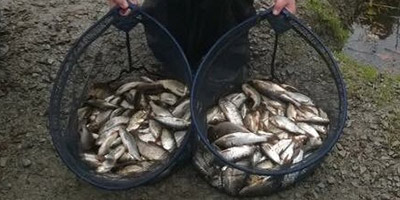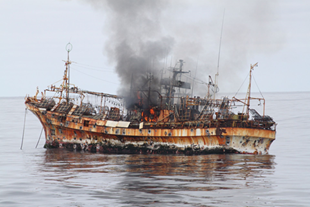Using a Gap Analysis as an Example to Illustrate how to Move to Resilience Thinking
By Richard Look, Senior Resilience Consultant, MMI Engineering
Resilience has become a central policy objective for many organisations and especially within government. The appeal of resilience is obvious; who wouldn’t want greater stability, less disruption and an enhanced ability to identify and exploit opportunities?
However, although the concept is tantalisingly simple, when it comes to implementation it soon becomes clear that in practice, it rapidly becomes complex. This is why, despite the media, politicians and organisations often quoting good resilience practices – in reality, there are very few examples of where the real benefits of a resilience objective have been realised.
We are entering what has been termed a VUCA (Volatile, Uncertain, Complex and Ambiguous) future. There is a “perfect storm” of stress factors, such as climate change, resource scarcity, wealth inequality, an aging population, increasing non-communicable disease, housing shortages, congestion, poor air quality, the automation of more and more of the economy – but to name a few. Many of these stress factors increase the impact and frequency of shock incidents, such as flooding and heatwaves – or make the systems that support our way of life more susceptible to them.
The gap analysis has become an invaluable tool for managers, and one often reached for to diagnose problems and develop solutions for their organisations. In simple terms, a gap analysis assesses or compares the current situation as described (descriptive) against a standard (normative). The gaps between the two can be measured and prioritised.
A gap analysis can be used to assess a simple process, e.g.
- Identify the existing process (descriptive): fishing with fishing rods
- Identify the existing outcome (descriptive): with fishing rods, we can catch 20 fish per day
- Identify the desired or standardised outcome (normative): we want to catch 100 fish per day
- Identify and document the gap: it is a difference of 80 fish
- Identify the process to achieve the desired outcome: we can use an alternative method to catch fish, such as using a fishing net
- Develop the means to fill the gap: acquire and use a fishing net
- Develop and prioritize requirements to bridge the gap[fusion_builder_container hundred_percent=”yes” overflow=”visible”][fusion_builder_row][fusion_builder_column type=”1_1″ background_position=”left top” background_color=”” border_size=”” border_color=”” border_style=”solid” spacing=”yes” background_image=”” background_repeat=”no-repeat” padding=”” margin_top=”0px” margin_bottom=”0px” class=”” id=”” animation_type=”” animation_speed=”0.3″ animation_direction=”left” hide_on_mobile=”no” center_content=”no” min_height=”none”][i]

However, as with so many management tools, the purpose of the gap analysis is to make the situation easier to understand and therefore identify the problem and design a solution. Unfortunately, this approach contains a trap. The obvious desire to make the complex simple means we take the problem out of context, design a solution out of context; but expect it to work when we put it back into context.
This description applies to much conventional political and business thinking, it is short-term, does not consider the whole system and sub-systems; and has the potential to be unsustainable.
A resilience solution can be used to deliver the same results, but in a long-term and sustainable way.
A resilience approach would:
- Define the vision, values and context of the operation
- Understand the system and sub-systems
- Assess the potential shock and stress factors
- Analyse the resilience measures already in place
- Develop a normative and descriptive profile
- Perform a multi-factor gap analysis
- Define a range of options looking at the whole system at strategic, tactical and operational levels – and for the short, medium and long term
- Evaluate these options and select the most appropriate
- Form the appropriate option into an action plan and implement
- Test, review, learn and adapt
Take the fishing example, a resilience approach would highlight many problems a conventional approach would be too myopic to see. For instance, the fact that the resource being utilised (i.e. the fish) is not inexhaustible, and therefore, the removal of 100 fish per day from the eco-system could destroy the balance within that eco-system and result in 0 fish per day two years later.
There could also be days when fishing is not possible because of shock factors, such as flooding, low water levels, disease within the fish stock, etc. If the target of 100 fish per day is to be met, the system of operation may need to land 120 fish per day when fishing is possible or permitted, to compensate for the afore mentioned uncertainty.
A sustainable and profitable solution could also require liaison with stakeholders up- and down-stream of the fishery, to ensure no damage to the habitat. Technological change could also be an important factor, as well as market changes in the demand for fish and the specific type of fish.
We need management systems, managers and leaders that embrace the complexity, can rationalise the uncertainty, respond to volatility, and use good judgement to cope with ambiguity. The simple approach, which takes the problem out of context, defines the solution and then forces it back into the context – expecting no problems, needs to change to reflect the reality of the VUCA future. This is why a comprehensive resilience approach is needed.
So, to conclude, when designing and implementing any system and system of systems (it is always a system of systems), a thorough understanding of the whole is essential. This is especially true of cyber systems, where firms and managers will invariably seek a technical solution without fully engaging the user or human factors, and then wonder why there are so many breaches. A fully resilient security solution would assess every aspect of the receiving system of systems to understand the less obvious, but equally critical aspects, of the operation and its operating environment that need to be developed alongside the technical solution to ensure a well-rounded resilient solution.
Richard is a Senior Resilience Consultant at MMI Engineering. He has been a joint winner of the Royal Charter International Research Award, completed a resilience diagnostic and strategy for a $10bn health care project, been core to the development of an online city resilience assessment tool and was the Project Lead delivering the Comprehensive Urban Resilience Masterplan for the City of Beirut. He was a business continuity and emergency planning lead for 8 years and an Army Officer for 7.
[i] Wikipedia
[/fusion_builder_column][/fusion_builder_row][/fusion_builder_container]

